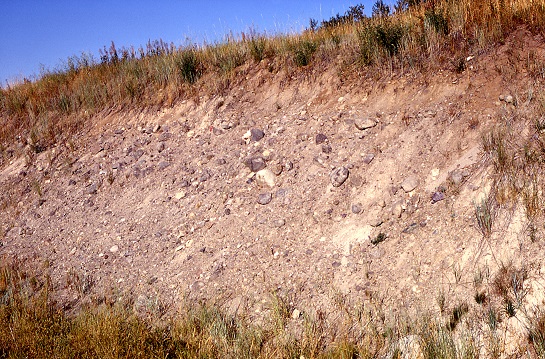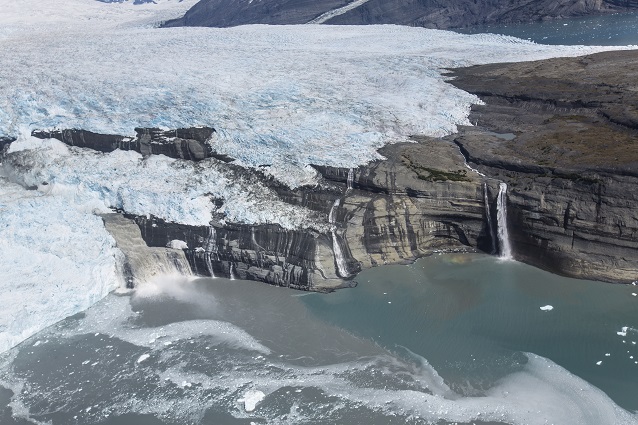The sediments produced through glacial grinding are very distinctive. Glacial till contains sediments of every size, from tiny particles smaller than a grain of sand to large boulders, all jumbled together. Glacial flour is that smallest size of sediment (much smaller than sand) and is responsible for the milky, colored water in the rivers, streams, and lakes that are fed by glaciers.

NPS Photo/John Good
Glacial till is the sediment deposited by a glacier. It blankets glacier forefields, can be mounded to form moraines and other glacier landforms, and is ubiquitous in glacial environments. It has a very distinctive composition that arises from the fact that glaciers not only grind rocks, breaking them into small, fine pieces but also they also pluck off large chunks of rock. This means that glaciers transport everything from large boulders to tiny grains smaller than sand.
These rocks and sediments are all mixed together in a jumble after they are deposited. In contrast, rocks and sediments deposited by rivers settle out as the water speed slows, so big boulders are often dropped before small grains of sand. Rather than jumbling sediments of every size, rivers sort them out in a way that viscous glaciers cannot.
Glacial Flour

NPS Photo/Jacob W. Frank
Glacier flour describes the component of glacier sediment that is much finer than sand. This material has a similar consistency to flour, which is the reason for its name. Because this sediment is so fine, it is easily transported by and suspended in water. It is responsible for the cloudy or milky appearance of the streams, rivers, and lakes that are fed by glaciers. Glacier lakes can have a wide range of beautiful colors that arise as sunlight scatters when it hits sediment particles in the water.
To learn more about glaciers, glacier features, and glacial landforms, see the Glaciers & Glacial Landforms Page.
Part of a series of articles titled Glacier Landforms.
Previous: Terminal and Recessional Moraines
Next: Glacial Erratics
Last updated: February 22, 2018
